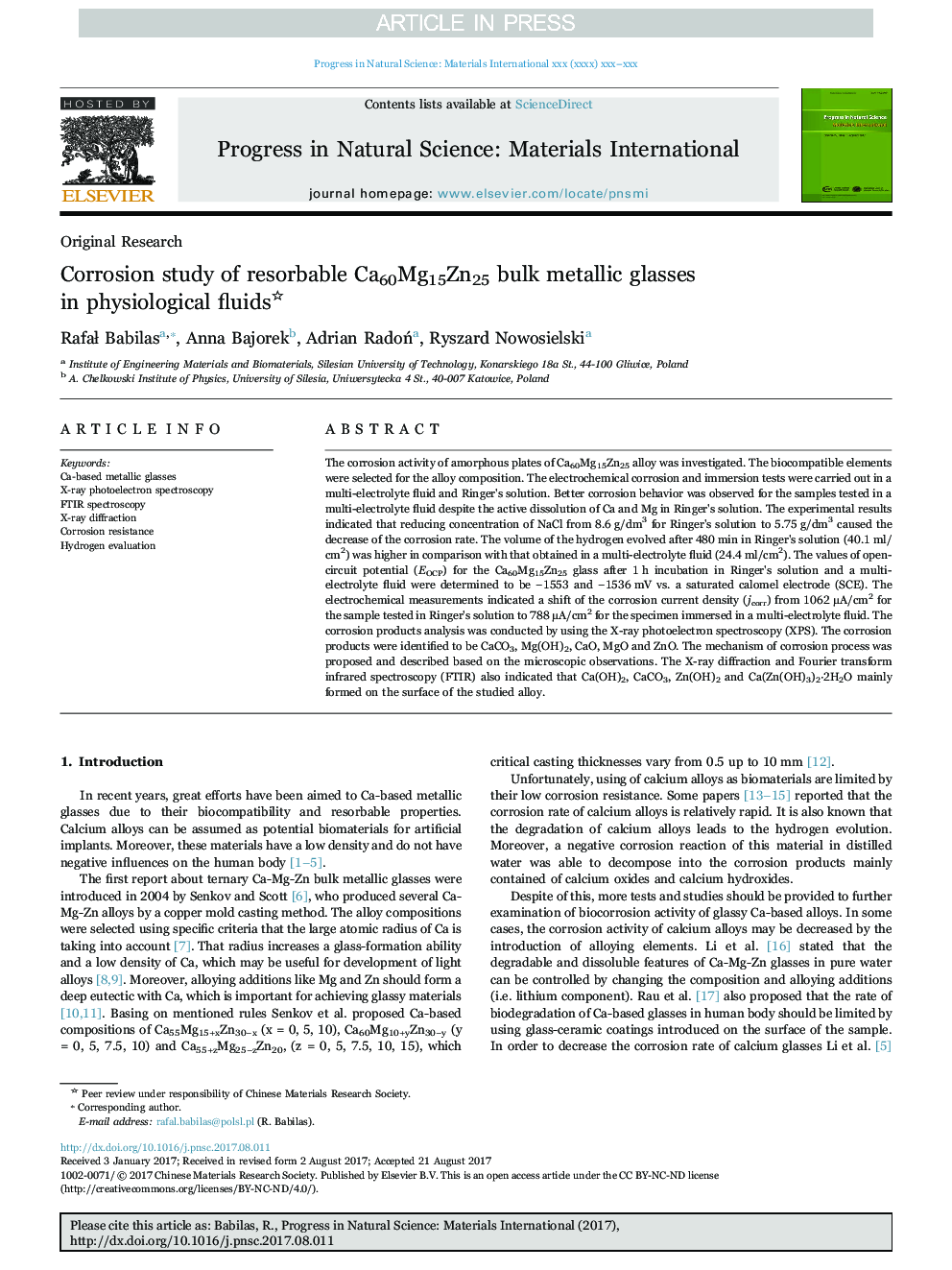| کد مقاله | کد نشریه | سال انتشار | مقاله انگلیسی | نسخه تمام متن |
|---|---|---|---|---|
| 7934847 | 1512943 | 2017 | 8 صفحه PDF | دانلود رایگان |
عنوان انگلیسی مقاله ISI
Corrosion study of resorbable Ca60Mg15Zn25 bulk metallic glasses in physiological fluids
دانلود مقاله + سفارش ترجمه
دانلود مقاله ISI انگلیسی
رایگان برای ایرانیان
کلمات کلیدی
موضوعات مرتبط
مهندسی و علوم پایه
مهندسی مواد
مواد الکترونیکی، نوری و مغناطیسی
پیش نمایش صفحه اول مقاله

چکیده انگلیسی
The corrosion activity of amorphous plates of Ca60Mg15Zn25 alloy was investigated. The biocompatible elements were selected for the alloy composition. The electrochemical corrosion and immersion tests were carried out in a multi-electrolyte fluid and Ringer's solution. Better corrosion behavior was observed for the samples tested in a multi-electrolyte fluid despite the active dissolution of Ca and Mg in Ringer's solution. The experimental results indicated that reducing concentration of NaCl from 8.6 g/dm3 for Ringer's solution to 5.75 g/dm3 caused the decrease of the corrosion rate. The volume of the hydrogen evolved after 480 min in Ringer's solution (40.1 ml/cm2) was higher in comparison with that obtained in a multi-electrolyte fluid (24.4 ml/cm2). The values of open-circuit potential (EOCP) for the Ca60Mg15Zn25 glass after 1 h incubation in Ringer's solution and a multi-electrolyte fluid were determined to be â1553 and â1536 mV vs. a saturated calomel electrode (SCE). The electrochemical measurements indicated a shift of the corrosion current density (jcorr) from 1062 μA/cm2 for the sample tested in Ringer's solution to 788 μA/cm2 for the specimen immersed in a multi-electrolyte fluid. The corrosion products analysis was conducted by using the X-ray photoelectron spectroscopy (XPS). The corrosion products were identified to be CaCO3, Mg(OH)2, CaO, MgO and ZnO. The mechanism of corrosion process was proposed and described based on the microscopic observations. The X-ray diffraction and Fourier transform infrared spectroscopy (FTIR) also indicated that Ca(OH)2, CaCO3, Zn(OH)2 and Ca(Zn(OH)3)2·2H2O mainly formed on the surface of the studied alloy.
ناشر
Database: Elsevier - ScienceDirect (ساینس دایرکت)
Journal: Progress in Natural Science: Materials International - Volume 27, Issue 5, October 2017, Pages 627-634
Journal: Progress in Natural Science: Materials International - Volume 27, Issue 5, October 2017, Pages 627-634
نویسندگان
RafaÅ Babilas, Anna Bajorek, Adrian RadoÅ, Ryszard Nowosielski,